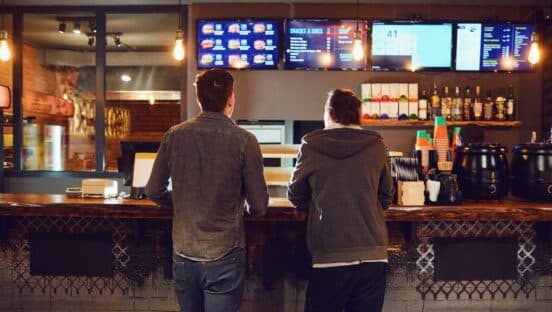Brand loyalty programs are growing increasingly important as restaurants look for new ways to engage younger, more tech-savvy consumers, but simply having a loyalty program is not enough to capture this audience. Brands must ensure that they not only offer a robust program with discounts and rewards, but also that they leverage data correctly to maximize profits from the bargains they offer.
As an industry leader with experience managing the back-end of more than 300 of the restaurant loyalty programs and as a consumer who belongs to several foodservice programs, Stephen Stone, content marketing specialist at Paytronix, is the brand loyalty guru. He shares his insights into what makes for good brand loyalty programs and how restaurants can improve profits by leveraging the data they collect.
1. Are loyalty programs really worth it for restaurants?
Yes, absolutely. They provide valuable insights about behavior, and they allow you to maximize the return on guest engagement. When you know guest behavior you can send targeted offers that encourage them to return. This is going to be even more important in 2017 and going forward.
2. What are the major misconceptions industry leaders have about loyalty programs?
A lot of people say that these loyalty programs are actually discount programs, and it’s too expensive to give products away. The problem is that many brands are giving away “$10 off a purchase” deals without understanding that targeting offers to people who may not have been coming in otherwise and who did use that discount will still be a profit because they weren’t going to come in and spend that money.
Having a brand loyalty program works as an exchange. Brands give customers something in exchange for their loyalty, but they are also giving customers something in exchange for their information. Those who know and understand that and in turn know how to use that data correctly are more relevant to customers.
3. What are the traits of a successful brand loyalty program?
The number one trait of a good program is simplicity. A simple program is one that is not just easy to understand, but also makes sure the customer understands what they have to do to earn and use a reward. The more complicated it gets, the less attractive the program becomes. You want to make it simple in terms of easy access to join the program, so you want to make sure you’re giving your customer as many options as possible to sign up for your program in whatever method they choose. Don’t just make it a card-based or a mobile-based program, make it all inclusive.
The other key is making sure you understand how much you should be giving back relative to what customers are spending. A good measure is that there is a 5 to 8 percent core program value, or, in other words, that is how much you’re giving back.
If customers spend $100 to get a reward, that reward should be $5 to $8. If you’re giving back too much, the program will become too expensive; if you’re giving back too little, you’re never going to motivate people to join and stay in the program.
4. What are brands getting right?
Many brands are using the right technology and have the infrastructure and knowledge to use that technology effectively. Being able to gather data and insights and recognize customer behavior at each touch point is vital, so having the infrastructure in place around when consumers order, when they pay, and when you communicate via email or any messaging platform is important. At each of these touch points, brands that are doing well are gathering that data, recognizing customer behavior, and giving relevant messaging and offers based on what they know.
5. What are brands getting wrong?
Brands that are calling their program a loyalty program but have the same offers and messaging for everyone and are really just discounting aren’t capitalizing on their program.
Some brands are sending offers to people who are going to come in anyway, and they don’t have the systems in place to not send it to people who were going to come in anyway. These brands are just giving away five free dollars. Those companies do not understand those important insights they should be getting from having a loyalty program.
6. How can brands successfully launch new programs?
It comes down to being able to identify what your brand specifically needs and understanding that there is no one-size-fits-all solution. Understand what your brand does and who your guests are and then think about the program that what will best engage and compel your guests to participate and come back in.
Make sure there is complete buy in on the program from the CEO down to the front-level staff. The waiters and servers need to buy into the program as much as the CEO and CFO do. It can only be effective if the front line staff is engaged, because they are the ones who have to promote and sell the program everyday.
7. What else should our readers know about brand loyalty programs?
Loyalty really does come in all different flavors. In any sort of good customer relationship management initiative, loyalty should be a component. In a great system we can track that customer behavior and give marketing the tools and insights to increase traffic and get the most from those marketing dollars by sending targeted offers. If you’re trying to figure out how to engage customers and build stronger relationships with those customers, loyalty allows you to be targeted and send offers that are motivating and get the right people to come back.












